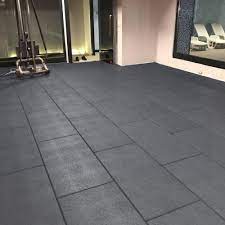Gym flooring
Gym flooring is an essential aspect of any fitness facility that often goes overlooked. It not only serves as a decorative element but also plays a critical role in providing a safe and comfortable workout environment. The right flooring can help prevent injuries, absorb impact, reduce noise and increase the lifespan of your equipment. With so many options available, choosing the best gym flooring can be overwhelming. This blog post will help you make an informed decision by highlighting the most important factors to consider.
The first thing to consider when choosing gym flooring is the type of activities that will be performed in the space. Different activities require different flooring materials. For example, a yoga studio might opt for a softer, more cushioned surface, while a weightlifting area might require a harder, more durable surface.
Weightlifting and CrossFit areas, for instance, require flooring that can withstand heavy weights being dropped repeatedly. Rubber flooring is a popular choice for these areas because it is extremely durable, slip-resistant, and provides excellent shock absorption. Rubber flooring is available in many forms, including tiles, mats, and rolls. It is also low maintenance, easy to clean, and can withstand high traffic.
Cardio areas, such as treadmills and spin bikes, require flooring that provides good shock absorption, reduces noise and vibration, and is easy to maintain. Interlocking foam tiles, rubber tiles, or rubber rolls are suitable options for these areas. Foam tiles are lightweight, easy to install, and provide good cushioning, while rubber tiles are more durable and better suited for high-traffic areas.
Yoga, Pilates, and dance studios require flooring that provides a balance of cushioning and support. Materials like cork, bamboo, and wood are suitable for these activities. Cork is an eco-friendly option that is soft, durable, and provides good insulation. Bamboo is also an environmentally friendly option, and it's known for its durability and resistance to moisture
Yoga areas, such as treadmills and spin bikes, require flooring that provides good shock absorption, reduces noise and vibration, and is easy to maintain. Interlocking foam tiles, rubber tiles, or rubber rolls are suitable options for these areas. Foam tiles are lightweight, easy to install, and provide good cushioning, while rubber tiles are more durable and better suited for high-traffic areas


.jpeg)
Comments
Post a Comment